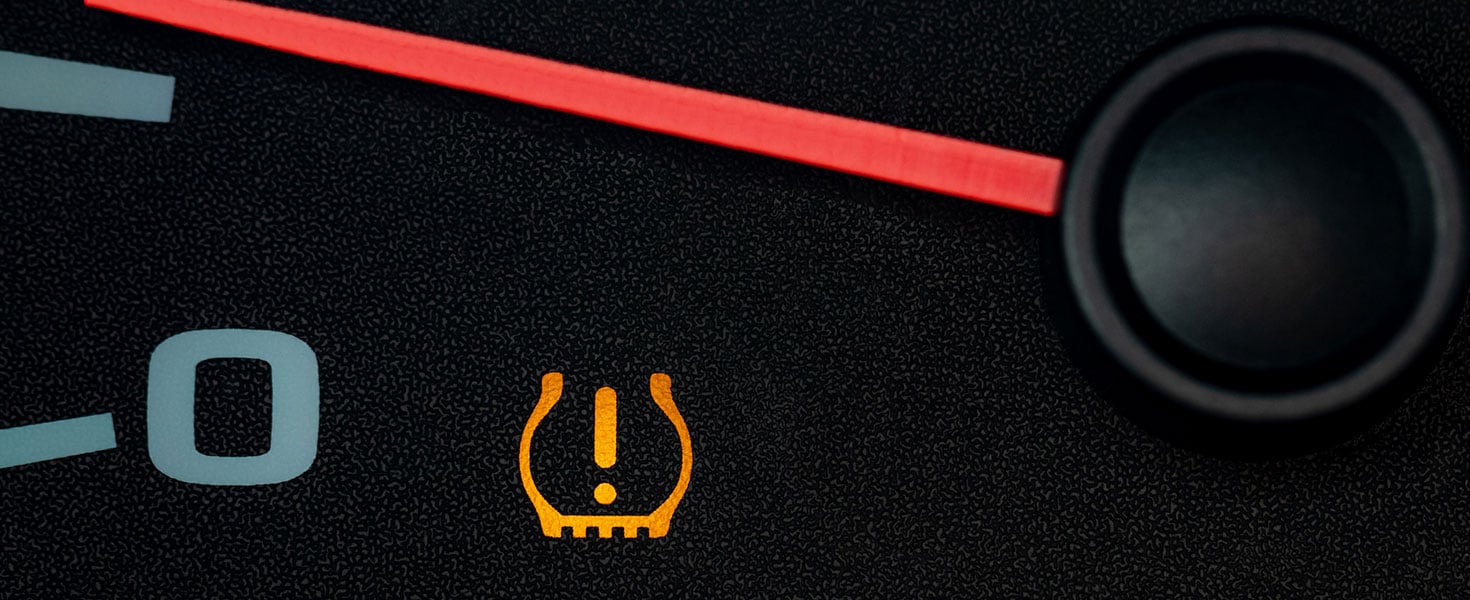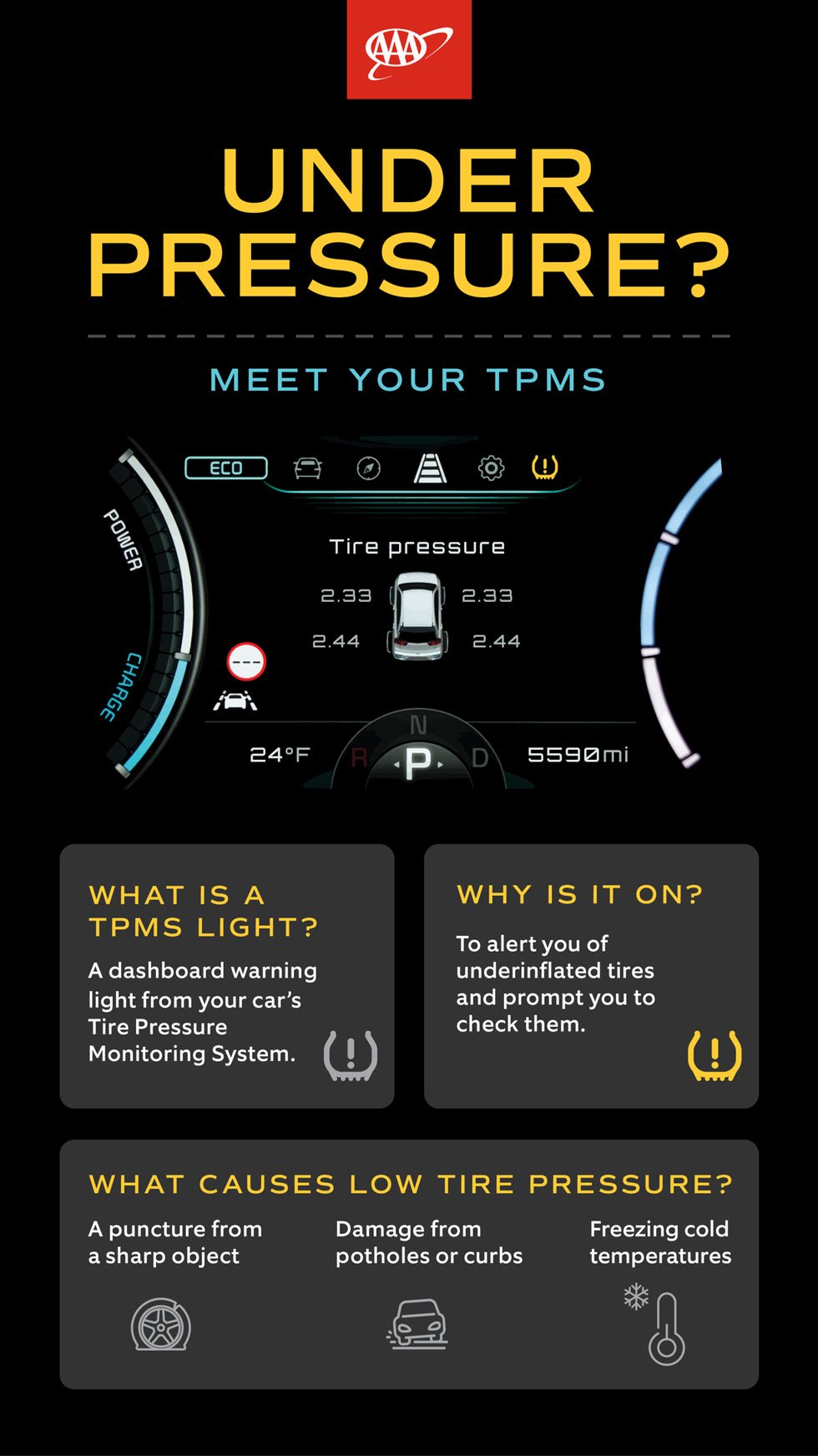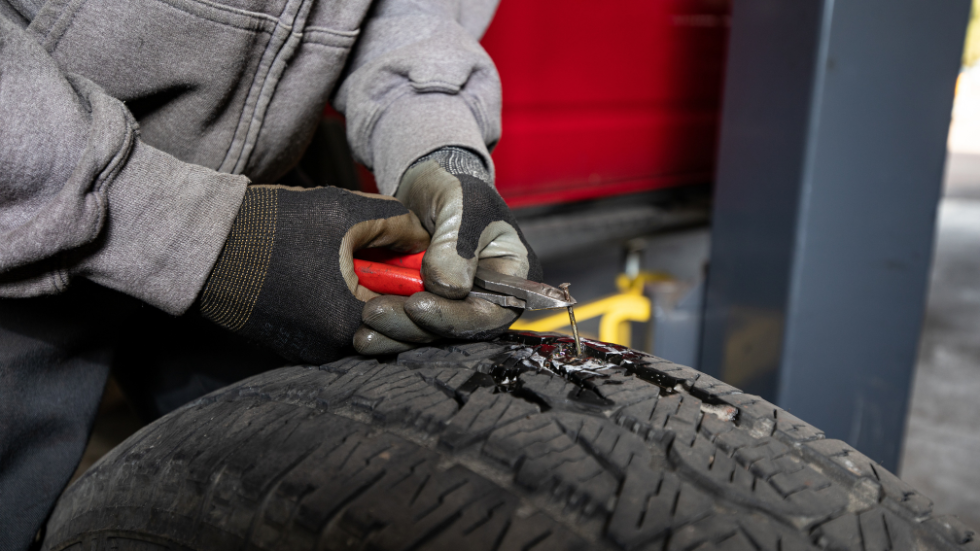What is a TPMS Light, and Why is It on?
What is the tire pressure monitoring system & how soon do I need to address it?



What is a TPMS light, and why is it on?
We’ve all been there; running late and in a hurry only to rush out to our car to be greeted with fresh warning lights on the dash. While some drivers prefer to pretend they don’t see them and instead hope their warning lights magically shut off on their own, conscientious vehicle owners prefer to tackle issues head on, as soon as they occur. Key to being able to do this is developing a good understanding of what does TPMS mean on a car, how a TPMS sensor is triggered, and how urgently a TPMS light needs to be addressed.
.png?h=551&w=980) TPMS displaying low psi; Photo by Multiverse/Stock.Adobe.com
TPMS displaying low psi; Photo by Multiverse/Stock.Adobe.com
The TPMS light, short for Tire Pressure Monitoring System, is one of many dashboard warning lights. TPMS were standardized on every vehicle made in America starting in 2007. It lets drivers know that one or more of their tires are under inflated and needs attention soon in order to avoid a flat or dangerous tire explosion.
How does TPMS work?
Depending on the make and model of your vehicle, the TPMS uses electronic sensors to detect the air pressure in each of your tires. Currently, there are two types of TPMS used by automakers: Direct TPMS and Indirect TPMS.
Direct TPMS:
Uses sensors mounted to the vehicle’s wheels to directly measure the air pressure within each tire, triggering when the measured pressure drops too low.
Indirect TPMS:
Uses wheel speed sensors to detect the rotational speed of each tire. When a tire is under inflated, it spins at a different speed from the other wheels, triggering the TPMS light.
 Mechanic extracting nail from tire; Photo by Lela Kieler/Stock.Adobe.com
Mechanic extracting nail from tire; Photo by Lela Kieler/Stock.Adobe.com
What causes low tire pressure?
Over time, your vehicle tires will naturally lose their air pressure (about 1lb psi per month) with the expanding and contracting of the air inside as temperatures change and you put miles on your vehicle. But if you suddenly notice your TPMS light is on, it could be for a number of reasons:
Freezing Cold Temperatures:
Sudden drops in temperature can condense the air in your tires overnight, lowering their pressure enough to trigger your TPMS light.
An Object Punctured the Tire:
A nail or other sharp object may have punctured your tire and you should pull over immediately to inspect and avoid more damage.
Struck a Pothole or Curb:
Vehicles that hit a pothole or a curb can damage or deflate a tire. If you’ve struck one of these, pull over immediately to inspect and avoid further damage.
. . . . .
To extend the life of your tires, you should make a habit of checking your tire pressure once per month. To keep your vehicle safe and your tires performing their best, you should also make a habit of visually inspecting your vehicle tires each time you fill up at the pump. This is easy and quick enough to do while the car is filling with fuel and could prevent future roadside headaches to boot!
